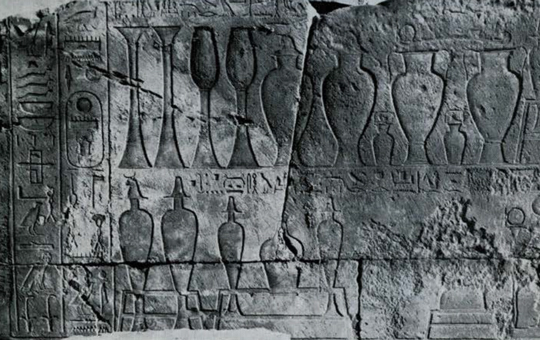Egyptian Section

Vol. XXI / No. 2
By: H. G. Fischer
Further Remarks on the Prostrate Kings
It not infrequently happens that a dossier on some class of ancient objects is no sooner closed and the result […]
View Article
Vol. XXI / No. 2
By: Rudolf Anthes
Memphis (Mit Rahineh) in 1956
Two main goals lay before me when I left for Mit Rahineh in January, 1956. First, to finish the 1955 […]
View Article
Vol. XX / No. 1
By: H. G. Fischer
Prostrate Figures of Egyptian Kings
Those who visit the Egyptian galleries and see about them the imposing representations of the pharaohs which are displayed there-the […]
View Article
Vol. XX / No. 1
By: Rudolf Anthes
A First Season of Excavating in Memphis
Excavating in Egypt means, in most cases, digging in the desert which adjoins the cultivated area of the valley of […]
View Article
Vol. XVI / No. 3
By: Norman Bel Geddes
Norman Bel Geddes: Designer
Of this sculptured Mayan death’s head from Guatemala, Mr. Bel Geddes said: This intrigues me. I don’t especially like it […]
View Article
Vol. XV / No. 2-3
By: Hermann Ranke
A Guide to the Egyptian Collections: The Egyptian Collections of the University Museum
The objects forming the present collections of the University Museum were acquired in various ways. In the early days-the Museum […]
View Article
Vol. XV / No. 2-3
By: Hermann Ranke
Egyptian Deities and Their Sacred Animals: The Egyptian Collections of the University Museum
The Egyptians, throughout their history, have been most god-fearing people. But they did not believe in only one god as […]
View Article
Vol. XV / No. 2-3
By: Hermann Ranke
A Sketch of the Geography and History of Egypt: The Egyptian Collections of the University Museum
EGYPT, situated in the northeastern corner of Africa, is a small country, if compared with the huge continent of which […]
View Article
Vol. XV / No. 2-3
By: Hermann Ranke
A Sketch of Egyptian Chronology: The Egyptian Collections of the University Museum
Prehistoric Period Before 3200 B.C. The Old Kingdom ca. 3200-2280 Archaic period (dynasties 1-3): ca. 3200-2680 Pyramid period (dynasties 4-6): […]
View Article
Vol. XIV / No. 3
By: C.-J. H.
Warp and Woof
WARP AND WOOF, the University Museum’s current exhibit of historic and contemporary textiles, has a double aim: to spread before […]
View Article
